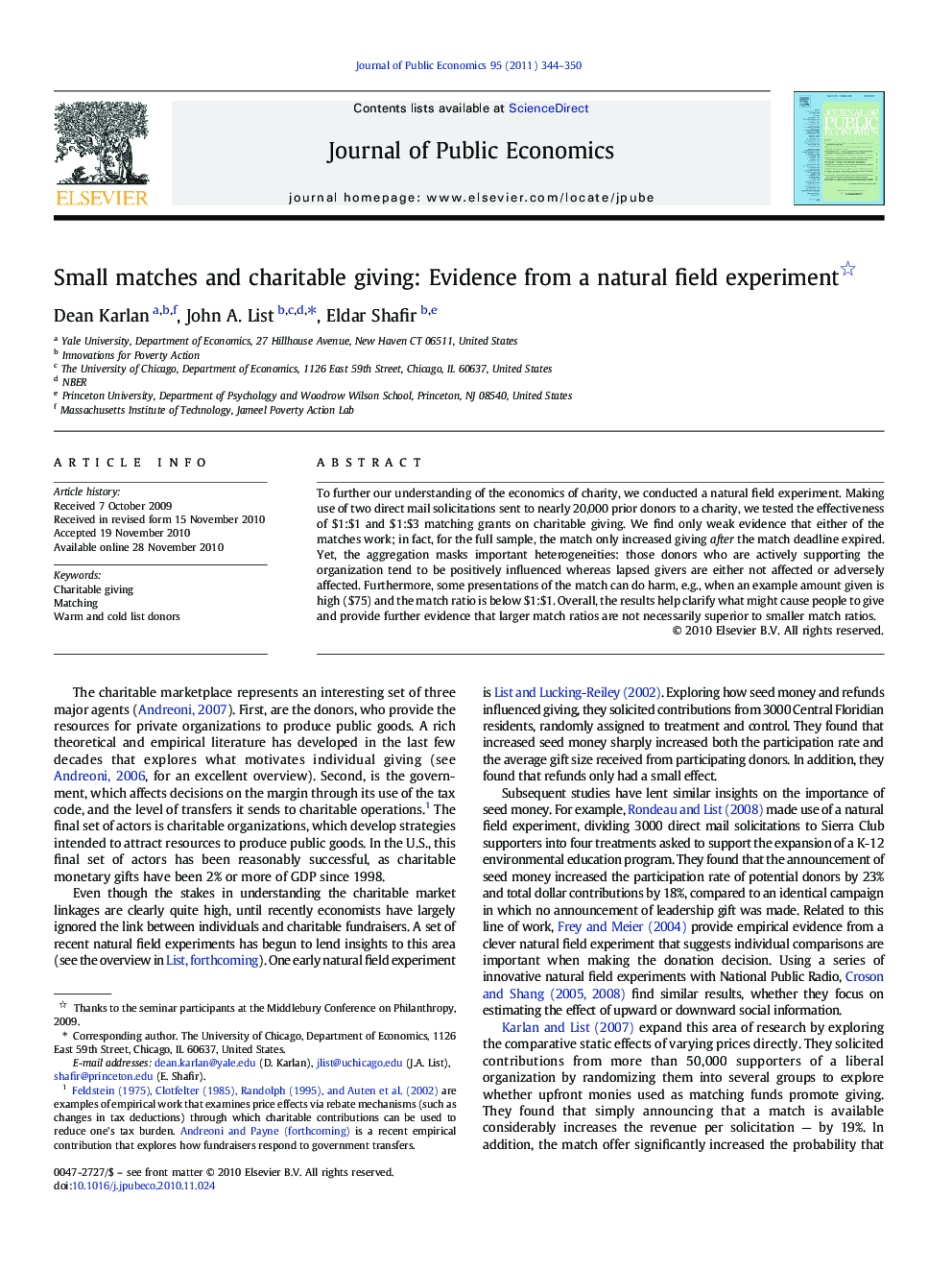| Article ID | Journal | Published Year | Pages | File Type |
|---|---|---|---|---|
| 970021 | Journal of Public Economics | 2011 | 7 Pages |
To further our understanding of the economics of charity, we conducted a natural field experiment. Making use of two direct mail solicitations sent to nearly 20,000 prior donors to a charity, we tested the effectiveness of $1:$1 and $1:$3 matching grants on charitable giving. We find only weak evidence that either of the matches work; in fact, for the full sample, the match only increased giving after the match deadline expired. Yet, the aggregation masks important heterogeneities: those donors who are actively supporting the organization tend to be positively influenced whereas lapsed givers are either not affected or adversely affected. Furthermore, some presentations of the match can do harm, e.g., when an example amount given is high ($75) and the match ratio is below $1:$1. Overall, the results help clarify what might cause people to give and provide further evidence that larger match ratios are not necessarily superior to smaller match ratios.
Research Highlights► We ran a natural field experiment sending solicitations to prior donors to a charity. ► We test the effectiveness of $1:$1 and $1:$3 matching grants on charitable giving. ► We find only weak evidence that either match works. ► Active donors to the organization, but not lapsed givers, are positively influenced. ► Context and donor heterogeneity can be important for fundraising outcomes.
